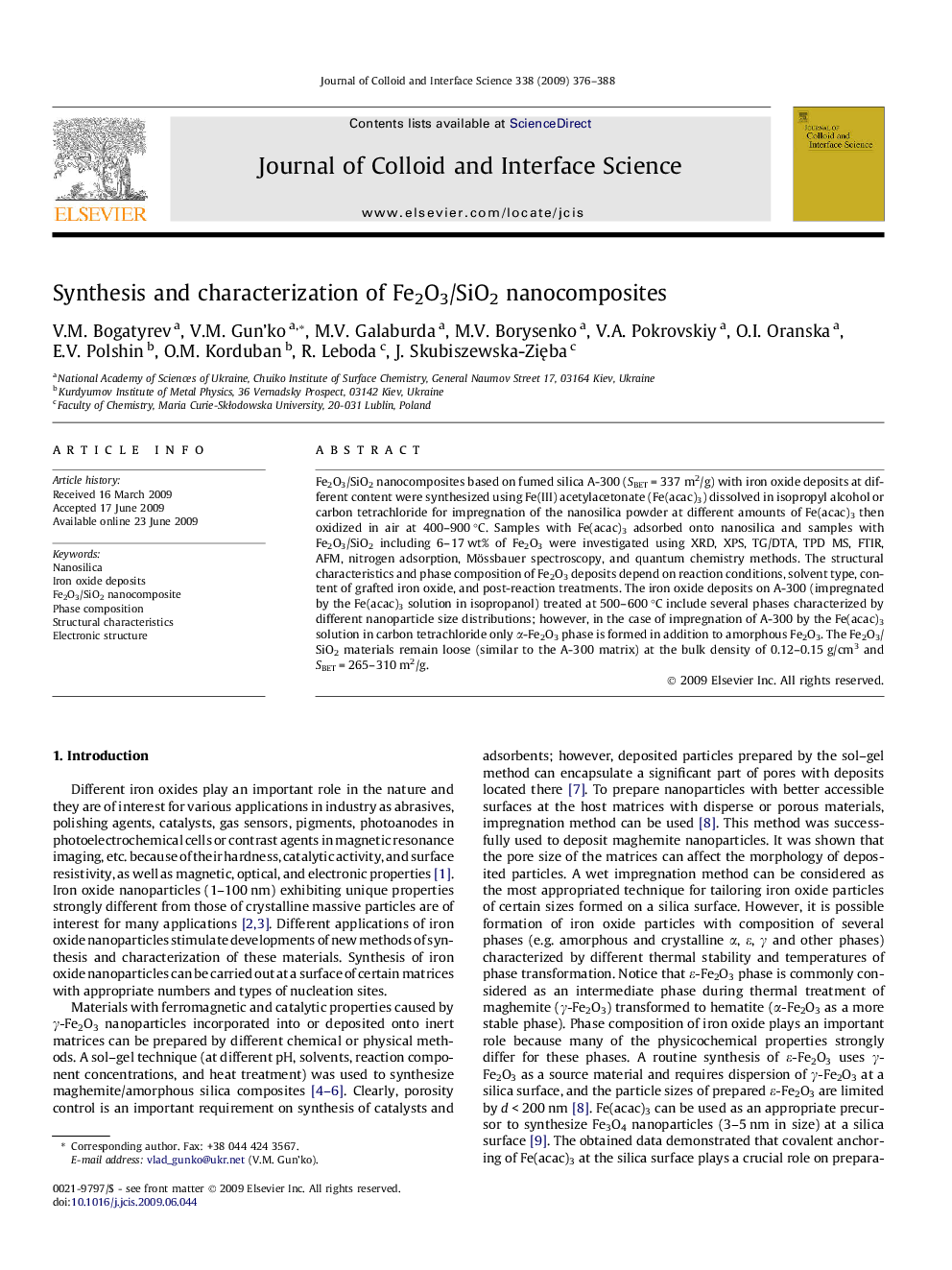| Article ID | Journal | Published Year | Pages | File Type |
|---|---|---|---|---|
| 610445 | Journal of Colloid and Interface Science | 2009 | 13 Pages |
Fe2O3/SiO2 nanocomposites based on fumed silica A-300 (SBET = 337 m2/g) with iron oxide deposits at different content were synthesized using Fe(III) acetylacetonate (Fe(acac)3) dissolved in isopropyl alcohol or carbon tetrachloride for impregnation of the nanosilica powder at different amounts of Fe(acac)3 then oxidized in air at 400–900 °C. Samples with Fe(acac)3 adsorbed onto nanosilica and samples with Fe2O3/SiO2 including 6–17 wt% of Fe2O3 were investigated using XRD, XPS, TG/DTA, TPD MS, FTIR, AFM, nitrogen adsorption, Mössbauer spectroscopy, and quantum chemistry methods. The structural characteristics and phase composition of Fe2O3 deposits depend on reaction conditions, solvent type, content of grafted iron oxide, and post-reaction treatments. The iron oxide deposits on A-300 (impregnated by the Fe(acac)3 solution in isopropanol) treated at 500–600 °C include several phases characterized by different nanoparticle size distributions; however, in the case of impregnation of A-300 by the Fe(acac)3 solution in carbon tetrachloride only α-Fe2O3 phase is formed in addition to amorphous Fe2O3. The Fe2O3/SiO2 materials remain loose (similar to the A-300 matrix) at the bulk density of 0.12–0.15 g/cm3 and SBET = 265–310 m2/g.
Graphical abstractFe2O3/SiO2 nanocomposites are characterized by low bulk density, high specific surface area and narrow distributions of both primary and secondary particles.Figure optionsDownload full-size imageDownload as PowerPoint slide
